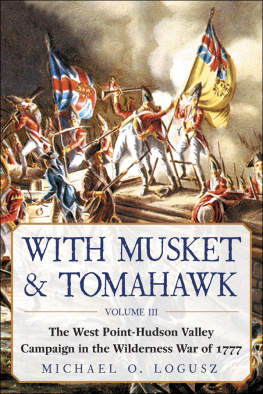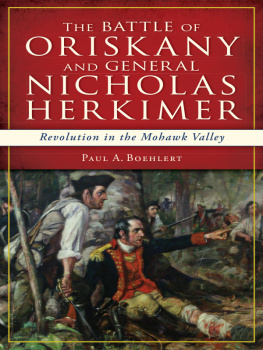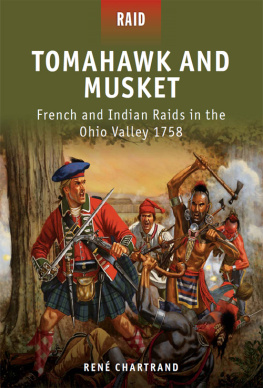Michael O. Logusz - With Musket & Tomahawk: The West Point-Hudson Valley Campaign in the Wilderness War of 1777
Here you can read online Michael O. Logusz - With Musket & Tomahawk: The West Point-Hudson Valley Campaign in the Wilderness War of 1777 full text of the book (entire story) in english for free. Download pdf and epub, get meaning, cover and reviews about this ebook. year: 2016, publisher: Carrel Books, genre: History. Description of the work, (preface) as well as reviews are available. Best literature library LitArk.com created for fans of good reading and offers a wide selection of genres:
Romance novel
Science fiction
Adventure
Detective
Science
History
Home and family
Prose
Art
Politics
Computer
Non-fiction
Religion
Business
Children
Humor
Choose a favorite category and find really read worthwhile books. Enjoy immersion in the world of imagination, feel the emotions of the characters or learn something new for yourself, make an fascinating discovery.
- Book:With Musket & Tomahawk: The West Point-Hudson Valley Campaign in the Wilderness War of 1777
- Author:
- Publisher:Carrel Books
- Genre:
- Year:2016
- Rating:3 / 5
- Favourites:Add to favourites
- Your mark:
With Musket & Tomahawk: The West Point-Hudson Valley Campaign in the Wilderness War of 1777: summary, description and annotation
We offer to read an annotation, description, summary or preface (depends on what the author of the book "With Musket & Tomahawk: The West Point-Hudson Valley Campaign in the Wilderness War of 1777" wrote himself). If you haven't found the necessary information about the book — write in the comments, we will try to find it.
In previous works on the Wilderness War, Logusz deftly described General John Burgoynes efforts in the Saratoga campaign. He covered the exploits of British general Barry St. Leger and the convergence of British, German, Canadian mercenary, loyalist, and Indian forces toward Albany. In this third installment, Logusz presents how British general Sir William Howe was to advance northward from New York City with a force of almost twenty thousand regulars accompanied with a strong river naval force to link up with the two other commanders in Albany. Capturing Albany would not only deny the provincials a vital town on the edge of a wilderness, but also cut off the entire region of New England from the rest of the newly established nation. Instead, Howe decided to pursue Washington in Pennsylvania, leaving behind British general Sir Henry Clinton in New York City to deal with the citys lingering troubles and the events to the north.
The book vividly describes the hardships encountered by the patriots fighting for independence and their opponents, along with Clintons experiences in and around New York City, West Point, and the Hudson Valley region. Logusz illustrates in depth the terrain, tactics, and terror of the multifaceted Wilderness War of 1777.
Skyhorse Publishing, as well as our Arcade imprint, are proud to publish a broad range of books for readers interested in history--books about World War II, the Third Reich, Hitler and his henchmen, the JFK assassination, conspiracies, the American Civil War, the American Revolution, gladiators, Vikings, ancient Rome, medieval times, the old West, and much more. While not every title we publish becomes a New York Times bestseller or a national bestseller, we are committed to books on subjects that are sometimes overlooked and to authors whose work might not otherwise find a home.
Michael O. Logusz: author's other books
Who wrote With Musket & Tomahawk: The West Point-Hudson Valley Campaign in the Wilderness War of 1777? Find out the surname, the name of the author of the book and a list of all author's works by series.














